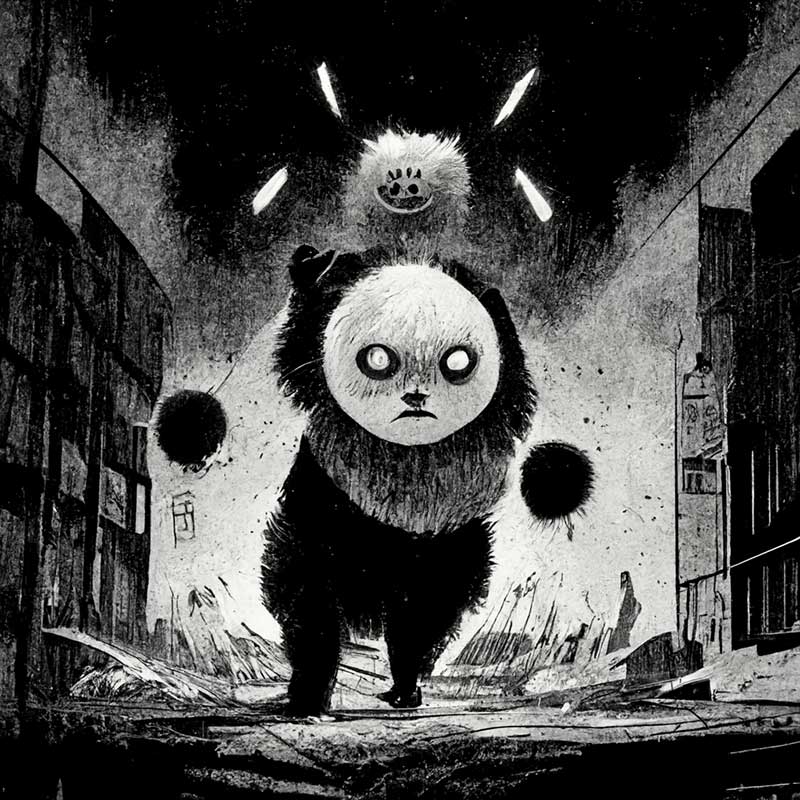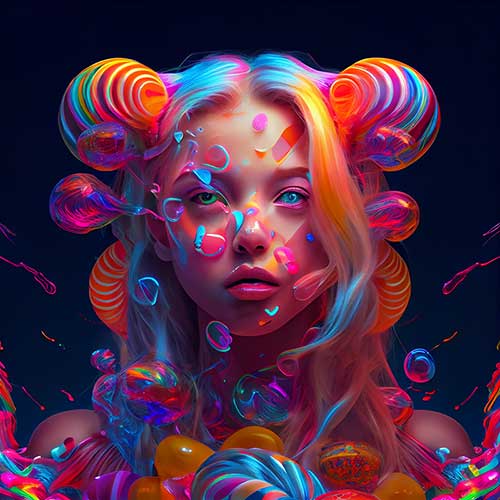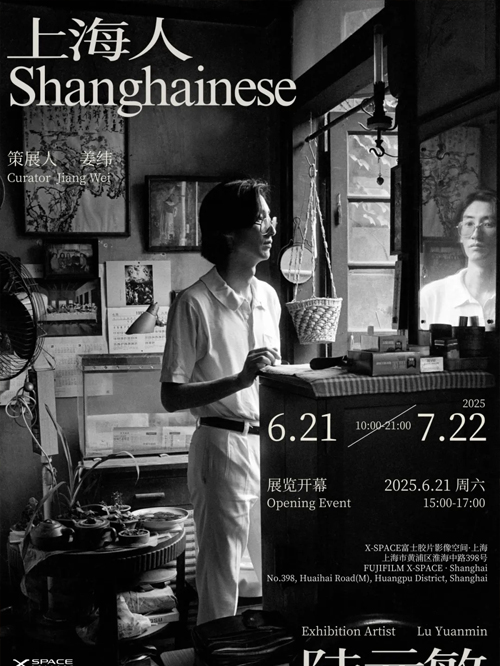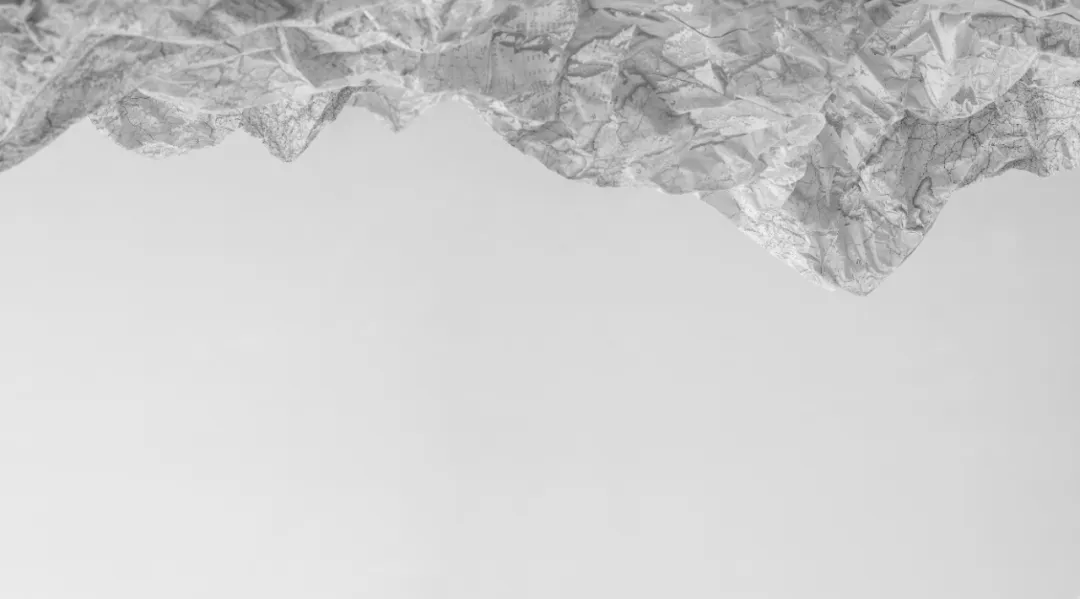
计洲 《景2》
Ji Zhou, Landscape 2, 150×270cm, 2013
理念的海:变化与永恒
The Sea of Eidos: Transformation and Eternity
艺术作为视觉和心理秩序的表达,作为探究“存在being”的视觉形态,是一种与世界本原相遇的方式。这里的“存在”包含了世界万物的有限本体,也隐含着世界与人的关系中的自然与道德的秩序,并最终指向宇宙创造的终极实在。艺术的创作不仅是在揭示世界与人的内在秩序,也试图追寻超越性的神圣秩序,感知表象之下的真实“存在”。
当代世界最大的危机就是“存在”的危机,是人类生存的失序和世界秩序的偏离。面对信息的碎片化浪潮,人性道德的堕落、社会的不公不义、国际关系的失衡,普遍价值的丧失,人类的生活和生存面临所未有的如海啸般的冲击,我们变成了无家可归的人。在艺术中探究人和世界的“存在”,探究事物的确定性和永恒性,不仅是对世界的归正与纠偏,也是对人内在秩序的恢复与重建。这是艺术中永恒的主题,也是当下现实的需要。
Art as an expression of visual and psychological order, as a visual form of inquiry into the “being,” is a means of encountering the world in its essence. Here, the “being” encapsulates the finite nature of all things in the world, while also implying the natural and moral order in the relationship between the world and human beings, gesturing towards the ultimate reality of the creation of the universe. The creation of art not only reveals the inner order of the world and human beings but also attempts to pursue the transcendental divine order, to perceive the real “being” that lurks under appearances.
The greatest crisis in the contemporary world is the crisis of existence, the disorder of human existence and the deviation of world order. In the face of information fragmentation, decadence of morality, social injustice, the imbalance of international relations, and the loss of universal values, the life and existence of human beings are confronted with an unprecedented calamity. We have become homeless spiritually. To explore the “existence” of human beings and the world in art, and to explore the certainty and eternity of things, is not only to correct and rectify the world, but also to restore and rebuild the inner order of human beings. This is the eternal theme of art and the need of the present reality.
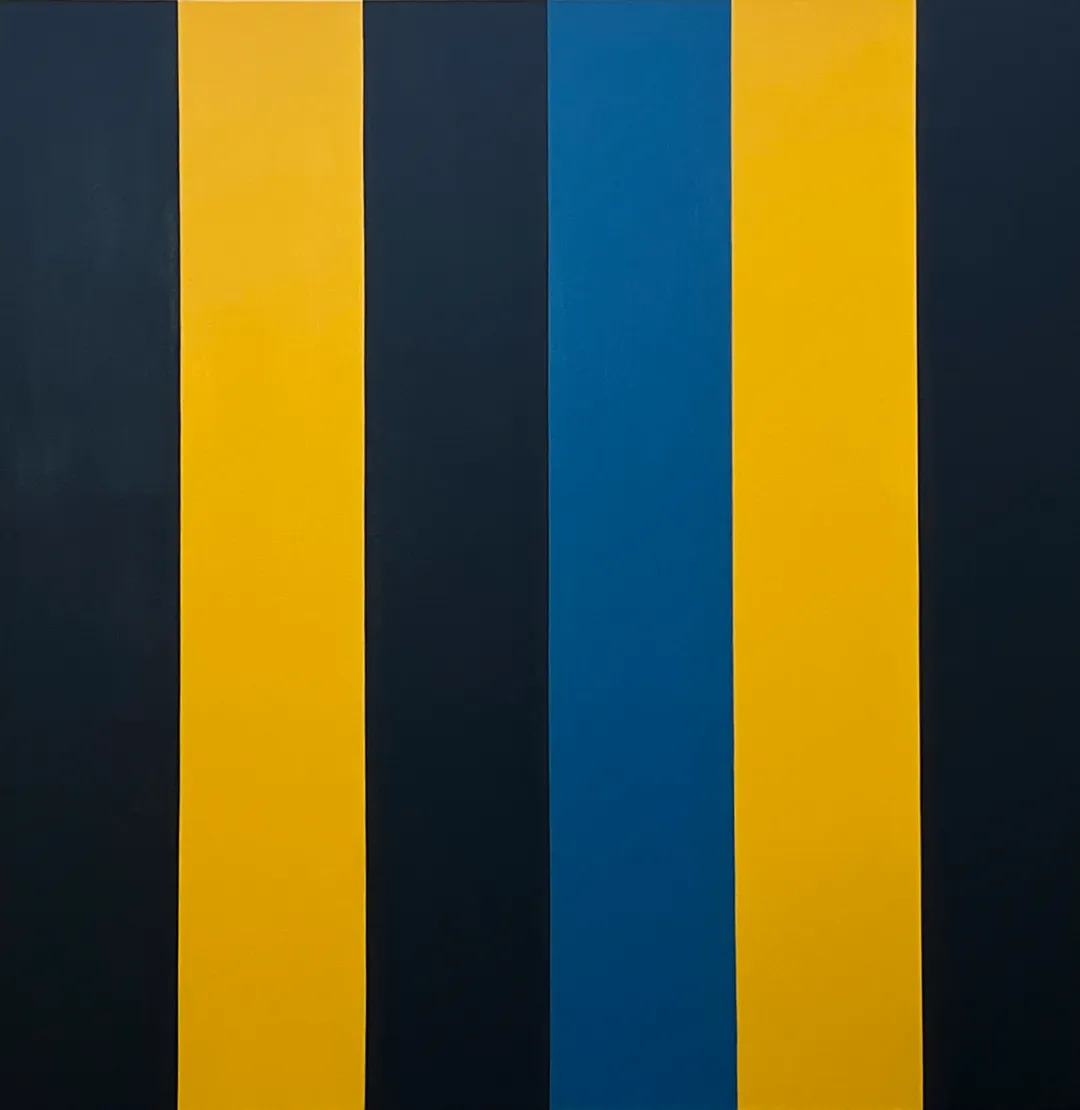
王昀 《"柱式"》系列 布面油画
Wang Yun, Order, Oil on canvas, 126×126cm, 2024
此次展览旨在呈现艺术中的本原理念所展现出的简单形式和内在秩序,试图探究艺术创作中理念的先导性、本原性和形式的简洁性、内在性。
此在是存在的具体,经验是先验的展开。展览主题以海作为象征,探究艺术中的变化与永恒。海是历史中的浪花,又是永恒中的平静。如果把海平面比作本原世界、本质的世界,这个本原与本质在时间中充满了变化,在规则中体现出永恒。海的水平线就像一条永恒的参照。
This exhibition aims to reveal the simple form and inner order that formulate the original Eidos, or conception, of art, trying to explore the prescient originality of Eidos and the innate formal simplicity in artistic creation.
“Being” is the materialization of existence, and experience is the unfolding of the a priori. The theme of the exhibition utilizes the sea as a symbol to explore the transformation and eternity in art. The sea is a wave that constructs history and the serenity that sits within eternity. If we compare the sea level to the world of origin and essence, this origin and essence are marked by transformation through time and embody eternity through order. The sea horizon is a standard measurement that refers to eternity.
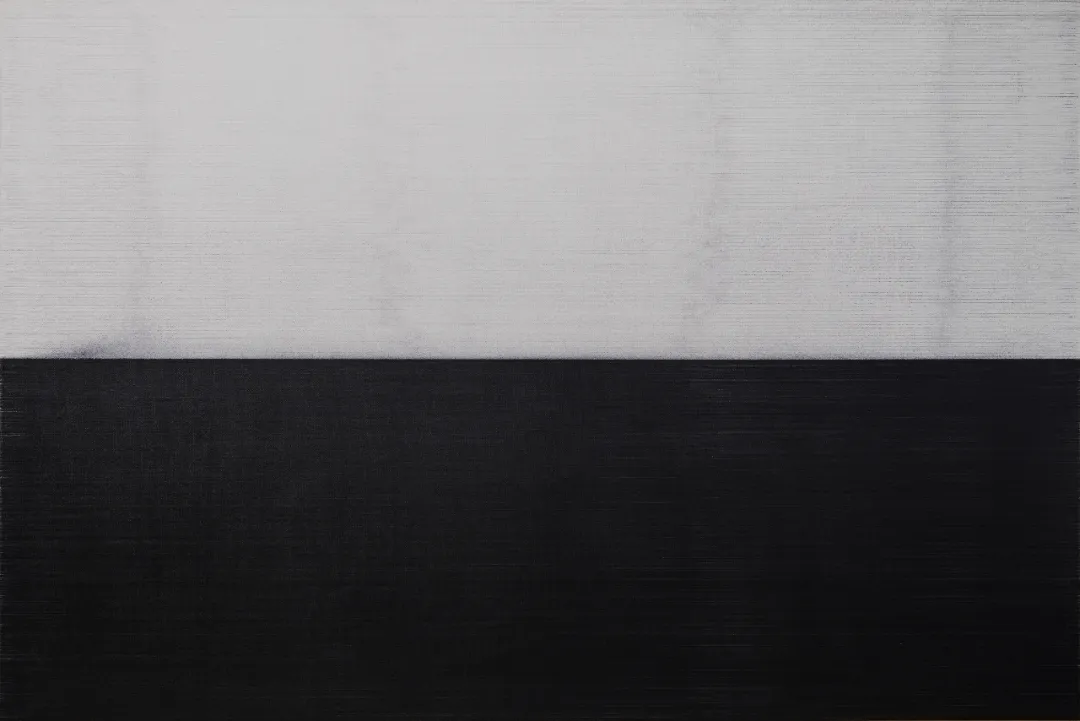
顾小平《行走的墨线201408》亚麻布 墨斗线
Gu Xiaoping, Ink Lines in Motion 201408, ink on canvas, 200×300cm, 2014
展览主题中的“理念”,既是物质表象背后的精神,也是对本原秩序的回归。我们从艺术史中可以看到两条明显的路径:一是艺术创作者秉持关于对世界“存在”秩序的认知,通过可见的自然来表达。在中国传统中的山水,西方古典的风景,特别是现代艺术探索中,塞尚对深度自然结构的把握,蒙德里安对现实风景的提纯,我们可以看出这条路径的现代性逻辑:从具象到抽象,逐渐脱离表象走向本质。二是从不可见的超验感知入手,表达人内在心灵自由的秩序。我们从中国传统的书法和文人画,西方的表现主义和极简主义艺术、日本的物派和韩国单色绘画等,可以清楚看到这一脉络。如此看来,理念显现的两条路径:从现实世界简化和抽象出规则;和从抽象直觉和感知进入具体。这两条路径彼此靠近,不断接近事物的本真存在。
The “Eidos” in the theme of the exhibition is not only the spirit behind materiality, but also a return to order. We can see two obvious paths in the history of art: one is that art creators uphold the cognition of the world's “existential” order and express it through visible nature. We can see the logic of modernity in this path in the traditional Chinese landscape, the Western classical landscape, and especially in the exploration of modern art, Cézanne's immense grasp of the natural structure, and Mondrian's purification of the realistic landscape: from the figurative to the abstract, and gradually detaching from the appearance to the essence. The second is to begin from the invisible transcendental perception and express the order of freedom of the human inner mind. We can clearly see this lineage from traditional Chinese calligraphy and literati painting, Western expressionist and minimalist art, Japanese object school and Korean monochrome painting. In this way, there are two paths for the manifestation of Eidos: simplification and abstraction of rules from the real world; and abstraction of intuition and perception into the concrete. These two paths are close to each other, constantly approaching the true existence of things.
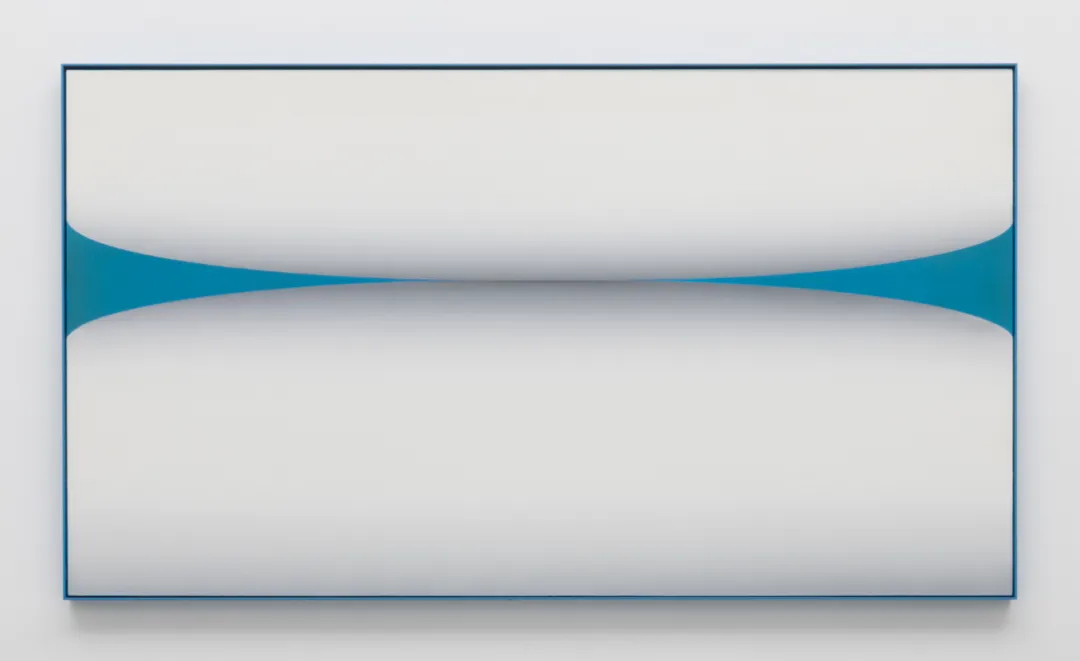
陈文骥《紧紧》布面油画
Chen Wenji, Closely, Oil on canvas, 100×180cm, 2016
一个致力于简单形式和内在秩序的展览意味着要处理一个横向和普遍的主题。根据格式塔原则:我们在认知事物时天然倾向于将事物统合简化为最简单形式或结构。在格林伯格的现代主义叙事中也强调,艺术是对恒定的、本质的理念的追求。坚信一件具有本原理念的艺术作品具有简洁的形式和超越时间的生命力,是这次策展的前设立场。从新石器时代的生活器物,到当代艺术中的抽象性和极简美学,我们发现这种“本原理念”与“简单形式”的原则贯穿于其中,具有视觉的绝对性和内在的超越性。此次展览将从理念与器物、极简与物性、内在与专注三个方面入手,探讨关于本原理念与简单形式和内在秩序的关系。
An exhibition dedicated to simple form and inner order equals dealing with a universal theme. According to the Gestalt theory, people have the natural tendency to perceive things by reducing them to their simplest form and structure. Clement Greenberg emphasized that art has always been a conceptual pursuit of purity and essence. The curatorial premise of this exhibition is to believe that an original artwork possesses the simplest, elegant form and a time-transcending vitality. From Neolithic artifacts to the abstract and minimalist aesthetics of contemporary art, we realize that this principle of “original concept” and “simple form” is permeated by visual absolutes and internal transcendence. This exhibition will explore the relationship between original concept, simple form, and inner order from three aspects: conception and object, minimalism and materiality, and interiority and concentration.

